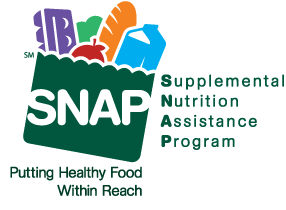The
Majority Already Work
Story from: MARIA GODOY & ALLISON AUBREY
Some 55 percent of families with kids that receive
food stamp benefits are earning wages. The problem is, those wages aren't
enough to actually live on.
Whitney Hayward/Press Herald/Getty Images
When President Trump's budget director, Mick
Mulvaney, unveiled the administration's budget blueprint earlier this week,
which calls for significant cuts to food stamps, he noted that the aim of the
budget was to get people working.
"If you're on food stamps and you're
able-bodied, we need you to go to work. If you're on disability insurance and
you're not supposed to be — if you're not truly disabled, we need you to go
back to work," Mulvaney said Tuesday.
But the reality is, many people (44 percent) who
rely on SNAP — the Supplemental Nutrition Assistance Program, as food stamps is
now known — have at least one person in the family working, according to the
latest figures from the U.S. Department of Agriculture.
And when it comes to families on SNAP with kids, a
majority — 55 percent — are bringing home wages, according to USDA. The problem
is, those wages aren't enough to actually live on.
That jibes with what Feeding America, a network of
U.S. food banks, found in 2014 when it issued Hunger in America, a
comprehensive report on who uses food pantries and why. It found that 54
percent of the families who turn to pantries to help put food on the table have
at least one member working, and that rate was much higher, 71 percent, for
households with kids.
In fact, SNAP already requires able-bodied adults
without children to find a job within three months and to work at least 20
hours a week or lose their benefits. All told, about 42 million people receive
SNAP benefits.
As it turns out, many of the working poor who rely
on SNAP benefits to get enough to eat are actually employed in the food
industry. As we've reported, an analysis from University of California,
Berkeley Labor Center found that 52 percent of fast-food workers are enrolled
in, or have their families enrolled in, one or more public assistance programs
such as SNAP, Medicaid or the Children's Health Insurance Program.
Overall, Trump's budget proposal would slash $191
billion from SNAP's budget over the next decade. But many of the states where
residents rely most heavily on food stamps are also states where support for
the president is strongest.
For instance, in West Virginia, Mississippi and
Louisiana, 1 out of 5 residents receives SNAP benefits, according to an
analysis from the liberal-leaning Center on Budget and Policy Priorities. All
three states voted overwhelmingly for Trump last November.

